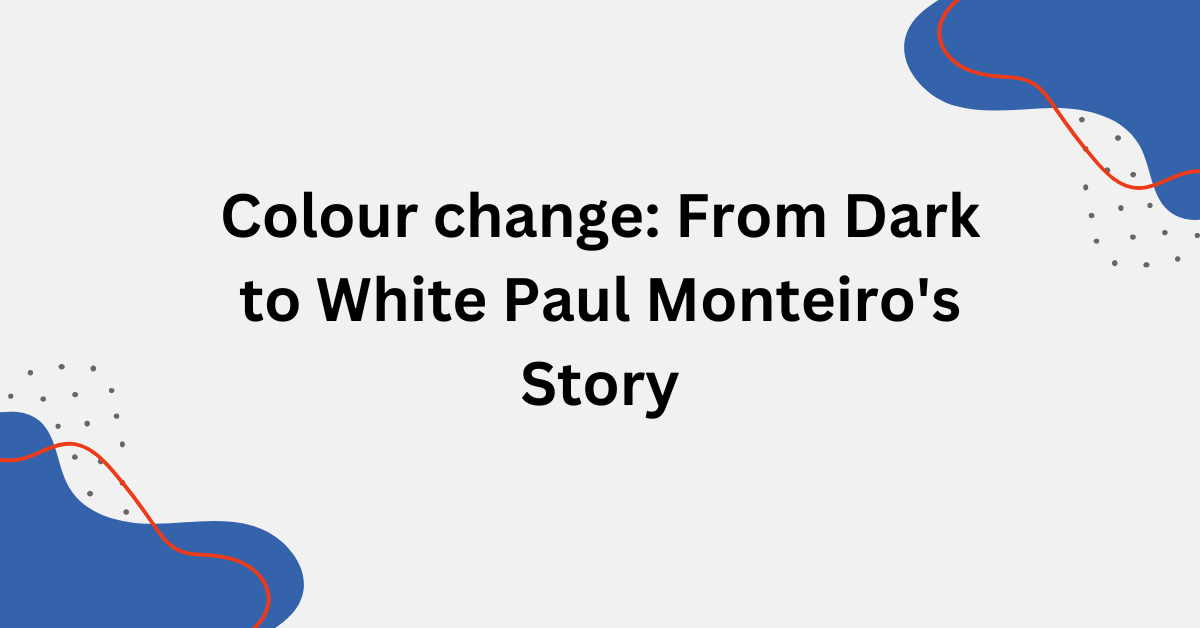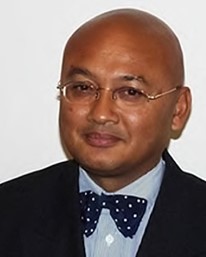
Paul Monteiro has had vitiligo since he was twelve years old. Monteiro was born with a dark skin color, but due to vitiligo, he lost all pigment. He became so pale that he continuously had to protect himself against the sunbeams. He admits the change of skin was not an easy one.

Paul Monteiro Before Vitiligo
People with vitiligo obtain white spots of different sizes and shapes, which can evolve with time. One of the spots where vitiligo arises often is on the hands and sometimes in the face. The darker the skin, the more obvious the spots are. Not everyone finds it hard to live with this skin disease, whilst others will try all that is possible to get rid of the spots. There are also patients whose spots are taking over almost the complete skin; these patients choose the option to bleach their skin. Paul Monteiro, chairman of the Dutch Patient Association of Vitiligo (www.Vitiligo.nl), has gone through all phases of vitiligo. He became paler by the day, which he really had to adjust to with his Dutch-Indonesian background, but today, he knows how to deal with it.
When twelve years old, Monteiro got vitiligo; at first, it could hardly be seen on his elbows and eyelids. Not long after that, the white spots disappear again, but ten years later, the condition returns quite badly. His roots are in Indonesia, and where others worry about the white spots, it bothers Monteiro that, especially in the summer, depigmentation occurs due to sunrays: the dark spots contrast his pale skin. Monteiro has chosen to start with UVB therapy to color the pale skin, hoping to reduce the contact between dark and light skin.
Paul Monteiro After Vitiligo
Monteiro: “The UVB did not have the effect I wished for. From a dark-colored man with skin type 4/5, I changed into a white man with skin type I in only four years’ time (2008-2012). Where the condition started out locally, it now rapidly grows all over my body. With all my pigment, also my ethnical appearances, of which I was really proud, disappeared, but I did always stay the same person”.
Monteiro does not regret the UVB therapy:
“When being challenged with a condition like this, you search for solutions. I wanted to find out whether there was a solution which would stop vitiligo. Unfortunately, that cure was not there for me. I had to learn and live with my condition like my GP told me during the first consult I had”.
Despite the advice given, Monteiro is not giving up and is not accepting the fact there is no cure yet. As chairman of the Dutch vitiligo patient association, he is not only fighting to find a cure but also to help the patients get out of their isolation.
People are afraid and feel ashamed, and therefore, they hide themselves. “I did struggle with my condition, but I explained my environment and what it is about and pointed out the fact Michael Jackson was also a vitiligo patient. I do have to be honest; I was facing hard times every now and then. I do not struggle with my appearance; it is the changing of my lifestyle I had to get used to. I really have to be careful with sun tanning; my skin cannot handle the sun. The body needs Vitamin D, but I can no longer be in the sun than 15 minutes. Besides that, I constantly have to use sunscreen, 50 SPF. “
“In The Netherlands, we are lucky with the healthcare system. But my advice is to always stay involved and interactive during the process. That way, the doctors will not only see you as a patient but also as a person. To me, that is an absolute must, as no patient is the same. Take that space to discuss your situation. An open communication helps patients obtain more insight into their own disease and its side effects. Then you will be far more able to understand suggested treatments, and it is then easier to stick to made decisions and agreements on how to treat the condition”.
‘Not only for the cure but also for the care’! Is internationally being established as a guideline to come to a shared plan of treatment?





